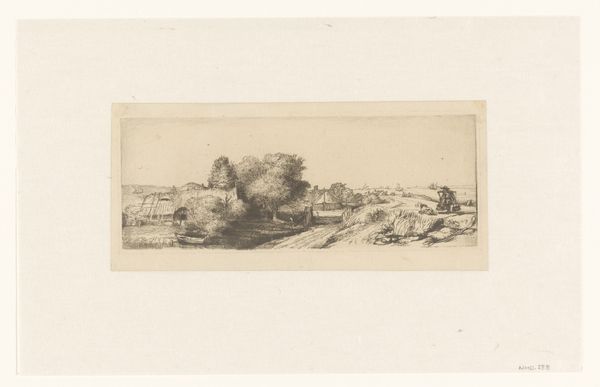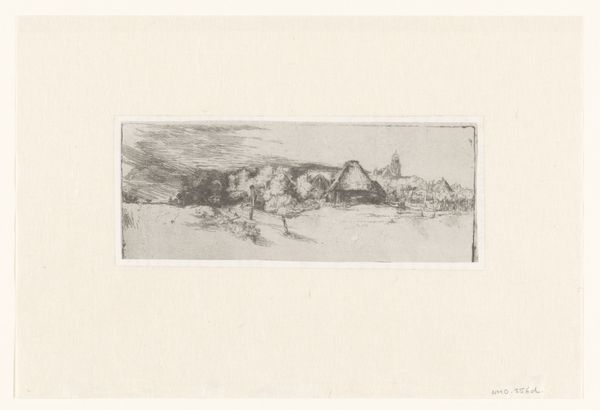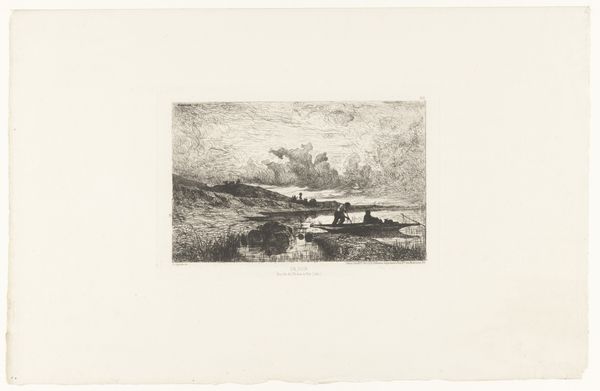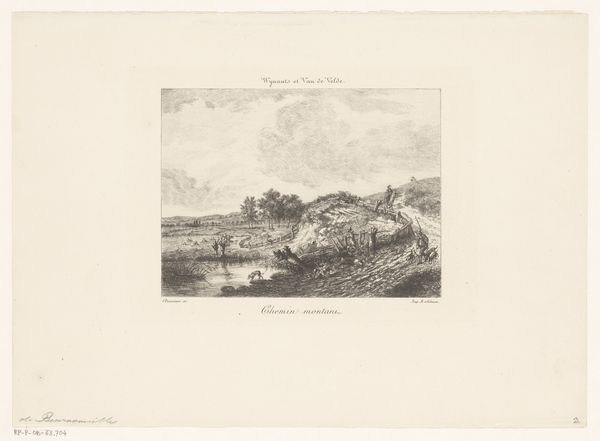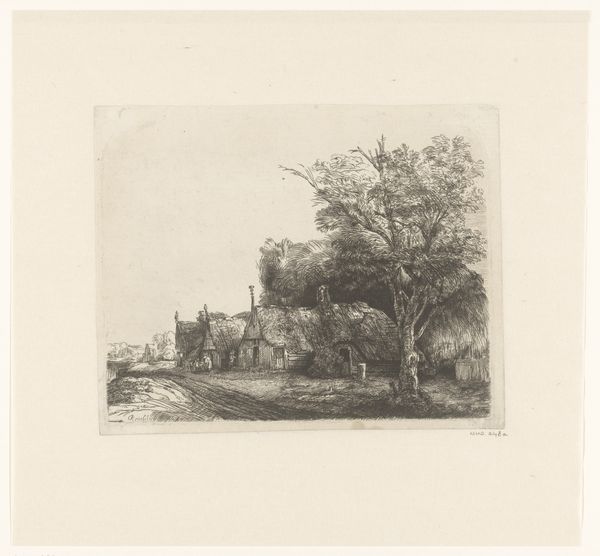
View of the Diemerdijk with a milkman and cottages ('Het melkboertje') 1750 - 1799
0:00
0:00
drawing, print, etching, engraving
#
drawing
# print
#
etching
#
old engraving style
#
landscape
#
genre-painting
#
engraving
Dimensions: height 64 mm, width 176 mm
Copyright: Rijks Museum: Open Domain
Curator: This etching before us, dating from between 1750 and 1799, presents us with a view of the Diemerdijk. It's titled "View of the Diemerdijk with a milkman and cottages" but is also known as "Het melkboertje." The print, now residing at the Rijksmuseum, encapsulates everyday rural life from the period. Editor: It feels quite humble and unadorned, doesn’t it? Almost… democratic in its simplicity. It shows a slice of life removed from royal portraiture and grand historical narratives. It's monochrome with subdued tones. Curator: Precisely! The prevalence of genre-painting in the late 18th century really moved away from strictly portraits or biblical scenes. This piece reflects a rising interest in the everyday, and particularly the rural. The "milkman" and cottages indicate that the labor of everyday citizens became valid subjects for artistic representation, reflecting societal changes that recognized non-elite individuals and social structures. Editor: Thinking about the production, as an etching it feels rather accessible. More affordable than a painting. It probably circulated quite widely and wasn't exclusively aimed at a wealthy audience, making the mundane visible on a bigger scale, right? Did these images help forge shared national sentiments through something as simple as common labor? Curator: Absolutely! This sort of art gained increasing circulation and was viewed across social strata; and images like this also reinforced—and sometimes romanticized—existing social hierarchies and class differences by shaping the public’s perception of them. Editor: I’m thinking how this image of presumed rural idyll also fits within larger discourses around land use and access to resources during this period. It suggests a world where milkmen traverse seemingly open, untouched spaces—which surely overlooks a more complex reality. Did such works consciously promote a depoliticized idea of Dutch rural life at the time? Curator: That’s a complex point, one that definitely encourages further consideration and research into how these representations served contemporary sociopolitical objectives. We tend to have rosy views of these types of pieces but thinking critically about the artist’s perspective versus the people presented really invites another layer to its meaning. Editor: It certainly shifts the perspective and lets you dig beneath the first glance. Curator: Yes, looking beyond surface appeal always brings nuance, doesn’t it? Editor: Always. Thank you.
Comments
No comments
Be the first to comment and join the conversation on the ultimate creative platform.
